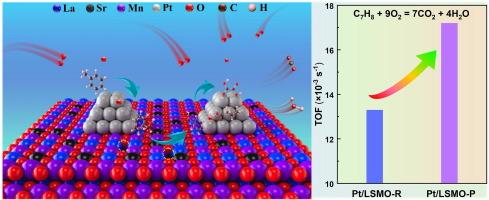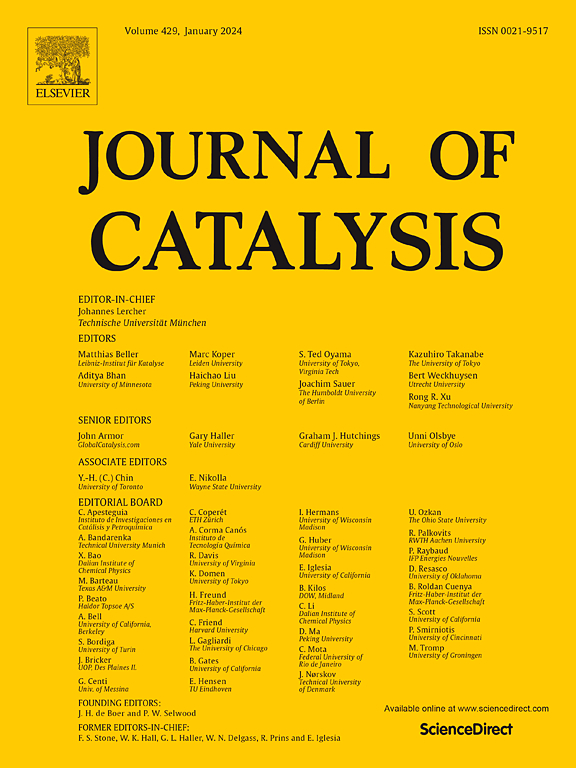Boosting low-concentration toluene oxidation by decorating ultrasmall Pt nanoparticles on La0.8Sr0.2MnO3-δ with hydrogen plasma treatment
IF 6.5
1区 化学
Q2 CHEMISTRY, PHYSICAL
引用次数: 0
Abstract
Perovskite is one of the most promising materials for catalytic oxidation of volatile organic compounds (VOCs) because of its special tunable structure and properties as well as high stability. However, it commonly suffers from relatively low catalytic activity due to the low specific surface area and limited numbers of active sites caused by high synthesis temperature required. To improve the reactivity of the perovskite catalyst, a promising strategy is to construct highly dispersed noble metal sites on surfaces perovskite. However, generating highly active metallic sites while exhibiting good thermal stability remains a formidable challenge. Here, it’s demonstrated that the construction of highly efficient and robust platinum (Pt) sites on La0.8Sr0.2MnO3-δ (Pt/LSMO) for toluene oxidation resulted in an almost three-fold increase in toluene conversion with a good stability. The key to the construction of these Pt sites is treating the oxidized Pt species on LSMO with hydrogen (H2) plasma at low temperatures, which leads to the formation of high metallic Pt (Pt0), ultrasmall Pt nanoparticles (∼1.3 nm), and high concentration of oxygen vacancy (Ov). These features facilitate the generation of a large number of highly active and stable Pt0-Mn3+-Ov sites on Pt/LSMO, which contribute to the activation of toluene and oxygen species and, therefore, the catalytic reaction. This investigation demonstrates a promising approach of using the cold plasma technique to design and construct high-performing noble-based perovskite catalysts for toluene oxidation.


求助全文
约1分钟内获得全文
求助全文
来源期刊

Journal of Catalysis
工程技术-工程:化工
CiteScore
12.30
自引率
5.50%
发文量
447
审稿时长
31 days
期刊介绍:
The Journal of Catalysis publishes scholarly articles on both heterogeneous and homogeneous catalysis, covering a wide range of chemical transformations. These include various types of catalysis, such as those mediated by photons, plasmons, and electrons. The focus of the studies is to understand the relationship between catalytic function and the underlying chemical properties of surfaces and metal complexes.
The articles in the journal offer innovative concepts and explore the synthesis and kinetics of inorganic solids and homogeneous complexes. Furthermore, they discuss spectroscopic techniques for characterizing catalysts, investigate the interaction of probes and reacting species with catalysts, and employ theoretical methods.
The research presented in the journal should have direct relevance to the field of catalytic processes, addressing either fundamental aspects or applications of catalysis.
 求助内容:
求助内容: 应助结果提醒方式:
应助结果提醒方式:


